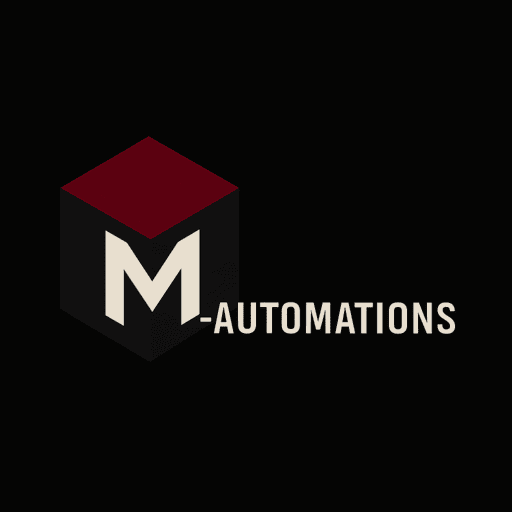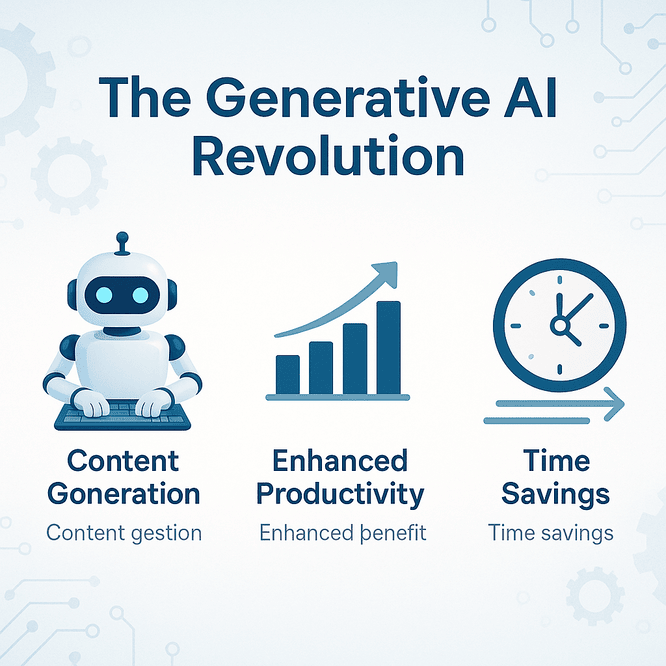How No-Code Tools Are Letting Non-Tech Teams Automate Like Pros
Have you ever sat at your desk, overwhelmed by endless tasks and processes that seem to sap your time and energy? You're not alone. In today's fast-paced business environment, many teams are drowning in operational inefficiencies and looking for ways to work smarter, not harder. Here’s the good news: no-code tools are changing the game. They empower non-tech teams to automate their workflows and processes without needing to write a single line of code.
Imagine being able to streamline your marketing campaigns, simplify HR onboarding processes, or moderate customer feedback—all without begging your IT department for help or spending weeks learning complex programming languages. This isn't just a dream; it's a reality for organizations embracing no-code automation. Ready to understand how no-code tools can transform your team? Let’s dive into the powerful ways these platforms are enabling you to work like the pros.
Empowerment of Non-Tech Teams
One of the most significant benefits of no-code platforms is the empowerment they offer to non-technical staff. Think about your own team's capabilities. How often do you find brilliant ideas lost in translation because they require technical skills that you or your colleagues don’t possess? With no-code tools, you can circumvent this barrier entirely.
You can create applications, automate workflows, and even manage data without ever needing to consult an engineer. Non-tech employees in departments like marketing, finance, and HR can take on project initiatives without waiting for IT's availability, leading to reduced turnaround times and enhanced responsiveness to business needs.
- Example: A marketing manager can utilize a no-code platform to build a customer feedback survey and automatically route responses into a database for analysis—without needing to involve IT. This enables faster decision-making and campaign adjustments based on real-time data.
Collaboration and Efficiency
No-code platforms don’t just allow independent functioning; they foster collaboration between non-tech teams and IT departments. These tools create a unique environment where both sectors can work together seamlessly. You can leverage your team's creativity and knowledge while IT ensures that all processes align with security and integration protocols.
- Pro Tip: Schedule regular meetings between departments to discuss ongoing projects enabled by no-code tools. This can lead to actionable insights and ensure that everyone stays aligned with organizational goals.
Flexibility and Scalability
In business, change is the only constant. The ability to pivot quickly can be the difference between success and stagnation. No-code applications are known for their adaptability. If your process needs a tweak or a major overhaul, no worries! Many no-code platforms allow for simple drag-and-drop modifications. You can often implement changes without lengthy development cycles.
- Did You Know? According to industry reports, 70% of new business applications will use low-code/no-code technologies by 2025. So, getting started now will future-proof your skills and adaptability.
Data & Statistics
Let’s take a look at some numbers that really highlight the power of no-code automation:
- 85% of companies currently utilize some form of no-code or low-code tool.
- 45% of Fortune 500 companies are leveraging no-code for core business processes.
- The no-code market is projected to skyrocket to $53 billion by the end of 2025.
- Expert Insight: “Low-code and no-code tools are a way to mitigate talent shortages because they allow companies to build software systems without the need for large teams of developers.”
These statistics paint a clear picture—businesses are catching on to the incredible efficiencies that no-code tools can provide.
Current Trends in No-Code Automation
-
Increased Adoption Across Industries: No-code platforms are no longer just for tech startups; they have penetrated large enterprises in sectors like finance, healthcare, retail, and more. If these industries can leverage no-code tools, so can your team!
-
Integration with AI and Automation: More companies are combining AI technologies with no-code platforms to enhance decision-making capabilities and overall efficiency. This integration means even more automation and smarter data management, helping your team finish tasks in record time.
-
Rise of No-Code Automation: No-code automation is particularly effective for everyday tasks and workflows, allowing teams to free up their time from repetitive processes. Automate your reporting, follow-ups, and data entry tasks, so you can dedicate your energies toward more strategic initiatives.
Actionable Insights for Non-Tech Teams
To maximize your abilities with no-code tools, follow these actionable steps:
-
Assess Current Processes: Take a hard look at your existing workflows. Identify areas where no-code automation could reduce manual labor or improve quality.
-
Choose the Right Platform: Not all no-code platforms are created equal. Look for a solution that meets your specific needs, offering user-friendly interfaces and adequate support for your organization's existing systems.
-
Foster Collaboration: Establish strong communication channels between non-tech teams and the IT department. Encourage your creative ideas while ensuring security oversight in a collaborative environment.
-
Monitor ROI: Keep track of key metrics to assess the effectiveness of no-code automation in your organization. Metrics to monitor include time saved, cost reduction, and employee productivity.
Tips for Implementation
-
Start Small: Don’t feel the need to overhaul your entire process at once. Start by choosing a single task or workflow to automate using a no-code tool, and expand from there.
-
Involve Your Team: Get your teammates involved from day one. Conduct workshops or training sessions to familiarize everyone with the chosen no-code platform. This builds enthusiasm and a collective sense of ownership.
Common Mistakes to Avoid
-
Neglecting Security Protocols: Ensure that any automation complies with your organization's security policies. Even non-tech users need to be aware of the risks.
-
Overcomplicating Automation: Sometimes less is more. Keep your automations simple and focused to ensure they are easy to use and don’t lead to confusion.
Conclusion
No-code tools have the potential to revolutionize how non-tech teams operate, enabling them to automate like pros and take control of their workflows. By empowering your team, facilitating collaboration, and encouraging a culture of innovation, you'll find that these platforms can elevate not only productivity but also morale within your organization.
So, are you ready to take the leap and embrace no-code automation in your team? The journey starts now—don’t miss out on harnessing the efficiencies that could redefine your work and your impact on your organization.
Key Takeaways
- Non-tech teams can now automate processes, minimizing reliance on IT departments.
- No-code tools foster collaboration and enhance flexibility in adapting to changes.
- Pro Tip: Start with small automation projects to build confidence and scalability.
- Monitor your team's use of no-code tools to evaluate effectiveness and ROI.
By making the leap into no-code automation, you're positioning your team for future success in a constantly evolving business landscape.
Frequently Asked Questions
How can no-code tools benefit my team?
No-code tools can benefit your team in several ways:
- Empowerment: Non-technical team members can create apps or automate processes without needing coding skills.
- Speed: Quickly build and deploy solutions, reducing the time spent on manual tasks.
- Collaboration: Facilitate teamwork between non-tech and tech staff for smoother project management.
- Cost-Effective: Save on hiring costs since you won't need as many developers to build applications.
What types of projects can I automate with no-code tools?
You can automate a variety of projects, including:
- Marketing Campaigns: Streamline email marketing and social media posts.
- Data Management: Create dashboards for tracking metrics or integrating different data sources.
- Customer Support: Set up chatbots or CRM systems without extensive tech input.
- HR Processes: Automate onboarding workflows or employee surveys.
Are there any limitations to no-code tools?
While no-code tools are incredibly powerful, there are some limitations to consider:
- Complexity: More intricate projects may still require some coding or custom development.
- Scalability: As your business grows, you might outgrow the capabilities of certain no-code solutions.
- Integration Issues: Not all tools will seamlessly integrate with your existing software.
How do I choose the right no-code platform for my team?
Choosing the right no-code platform involves considering a few key factors:
- Usability: Look for a user-friendly interface that your team can easily navigate.
- Features: Ensure the platform has the features you need (like automation, integrations, etc.).
- Support: Check if the platform provides robust customer support and community resources.
- Cost: Compare pricing structures to find one that fits your budget.
Can no-code tools really replace developers?
No-code tools can’t entirely replace developers, but they can enhance productivity:
- Focus on Core Tasks: Developers can spend more time on complex issues and less time on simple automations.
- Collaboration: Non-tech team members can handle basic tasks, allowing developers to focus on innovation.
- Prototyping: Developers can use no-code tools to quickly prototype ideas before full production.
What skills do I need to use a no-code platform?
Using a no-code platform is accessible and often requires minimal skills:
- Basic Computer Skills: Familiarity with using software applications.
- Problem-Solving: The ability to identify problems and think critically about solutions.
- Growth Mindset: Willingness to learn and explore the features of the platform.
How can I measure the success of using no-code tools?
To measure success, consider tracking:
- Time Savings: How much time does automation save compared to manual processes?
- Cost Reduction: Are your operational costs decreasing as a result?
- User Adoption: Is your team actively using and benefiting from the new tools?
- Business Impact: Look for improvements in metrics relevant to your business goals, like customer feedback or increased sales.



